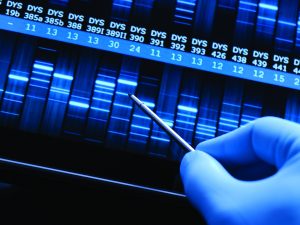Español Français Português عربى |

Our society continues to change and evolve with constant advancements in science and research. Innovative technologies, novel communication platforms, and developments in data management mold how we live our lives, thereby also impacting the policing profession. We see profound examples of this through changes in our approaches to investigating criminal activity, as well as the processes we use to do so. In direct correlation to the shifting nature of criminal activity, our crime-solving methods have changed along with the challenges and barriers we face.
Our agencies are repeatedly confronted by the need for lawful access to encrypted data, advanced tools, and forensic capabilities. It is imperative that these demands, coupled with a sensitivity to individuals’ concerns over privacy and the increasing importance of digital evidence to investigations, are well understood. The International Association of Chiefs of Police understands this and recently passed two resolutions aimed at mitigating the challenges to investigating crime, including addressing concerns over privacy and liability.
Perhaps at the forefront of such changes are the methods in which we collect and analyze DNA. Private companies now evaluate DNA samples from private individuals at their request to provide a range of services such as delineating ancestry composition and predicting possible health predispositions. With these services becoming increasingly popular, their potential benefits to public safety also rise, with the opportunity for partnerships with law enforcement to generate leads and solve crimes. To date, law enforcement has been successful in following through on this opportunity, and DNA samples from violent crime scenes sent to these companies have led to the successful resolution of a significant number of crimes and several long-unsolved murders, including the arrest of the Golden State Killer.

Genetic testing and genealogy, therefore, have enormous potential benefits for public safety, the clearing of innocent parties, and the provision of justice for victims’ families. But with an increased wealth of information also comes public concern over privacy, and genealogy companies have remained hesitant to comply with law enforcement requests for DNA samples. The IACP calls upon our elected leaders to establish legislation to further support and enable the use of this investigative technique and urges genealogy companies to engage in productive dialogue with the law enforcement field in order to reach a balance between privacy and the safety of our communities. Honest conversation and reflection are crucial to upholding trust within our communities and making the policing profession as effective and efficient as possible.
Methods of storing and encrypting data have also had a profound influence on our profession’s ability to obtain vital information for investigations. In 2017, more than 130,000 requests for digital evidence were placed with just six tech companies—Google, Facebook, Microsoft, Twitter, Oath (formerly Yahoo), and Apple. A lack of regulation regarding lawful access to digital data has led to inconsistent compliance with such requests. Encryption has not only hindered law enforcement’s detection and prevention of crime, but it has also inhibited the identification of those responsible for crimes already committed. The expanding implementation of user-only access encryption has also been seen by some in the industry as a means of plausibly denying knowledge of and responsibility for the use of their services or devices by criminals, terrorists, and spies, thereby obviating any legal obligation to stop or mitigate such harm. While it is understood that no one technological solution will resolve everything, IACP’s resolution calls for the enactment of legislation and regulations regarding lawful access to digital data in order to aid in the investigation of criminal activity. Just as with DNA analysis, law enforcement must juggle privacy, liability, and lawful access concerns by continuing to work with industry leaders and elected officials. The ultimate goal of law enforcement should be to reach a balance between what we need to do to effectuate good police work while being understanding of communities’ concerns.
The ultimate goal of law enforcement should be to reach a balance between what we need to do to effectuate good police work while being understanding of communities’ concerns.
Recently, there has been forward movement in getting members of the U.S. Congress to understand the challenges for law enforcement, especially in cases involving human trafficking, child exploitation, and drug investigations. IACP leadership intends to continue talks with legislators and their staff to make progress in these critical areas.
While complex criminal activity continues to rise, it is important to note most crimes are still carried out through more commonplace approaches. In fact, more than 75 percent of crimes committed each year involve motor vehicles. The IACP understands the importance of providing resources that cover the gamut of criminal activity and investigative procedures. Recently, the Vehicle Crimes Committee created a comprehensive educational toolkit aimed at helping agencies better prepare to investigate vehicle-related crimes. I hope you review this toolkit and share it with members of your agency.
As enforcement continues to advance and the technologies that aid us in our daily jobs and investigations continue to expand, we must not lose sight of the fact that criminals will continue to advance and continue to have access to expanded technology to aid them in committing crimes.
In this ever-growing digital age, we must continue to evolve in the technology we use and our investigative tactics, while still maintaining public trust, safeguarding the public, and dismantling sophisticated transnational criminal networks. We must be committed to continued collaboration among law enforcement, government, and across the world to succeed.d
Please cite as
Steven R. Casstevens, “Policing in an Age of Digital Evidence and DNA,” President’s Message, Police Chief 87, no. 2 (February 2020): 6–7.


